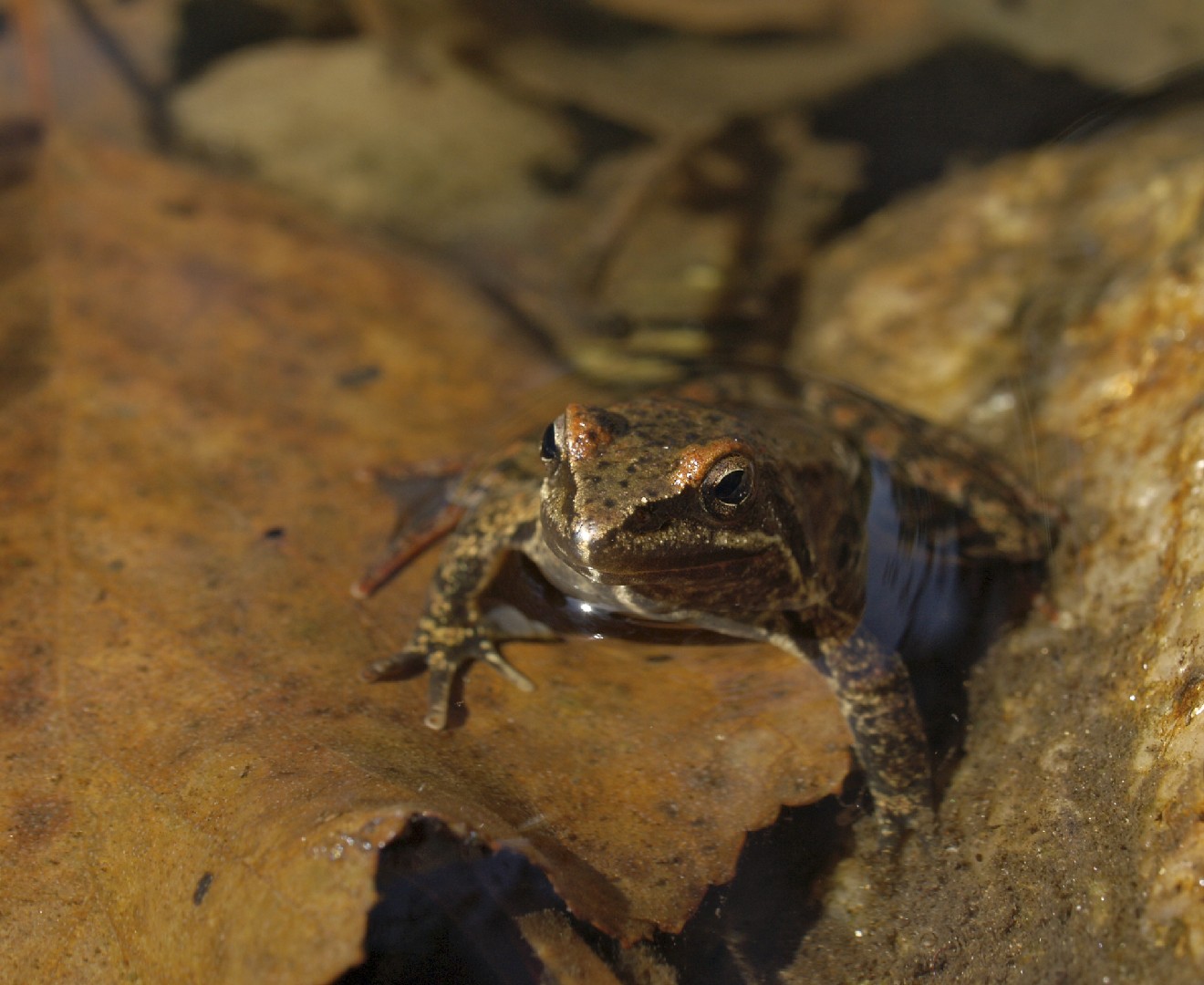Iberian frog
A species of Holarctic true frogs Scientific name : Rana iberica Genus : Holarctic true frogs
Iberian frog, A species of Holarctic true frogs
Scientific name: Rana iberica
Genus: Holarctic true frogs
Content
Description General Info
Description
The Iberian frog or rana patilarga, (Rana iberica), is a species of frog in the family Ranidae found in Portugal and Spain. Its natural habitats are rivers, mountain streams and swamps. It is threatened by habitat loss, introduced species, climate change, water contamination, and increased ultraviolet radiation.
General Info
Lifespan
6-10 years
Diet
Iberian frog primarily feeds on small invertebrates such as insects and spiders, exhibiting a preference for ants and beetles. Its diet also includes gastropods and other arthropods in certain habitats.
Appearance
Iberian frog is a small-sized frog with a compact, smooth-skinned body. Its primary color is dark brown, sometimes blending with greenish hues and often dotted with black or dark green irregular spots. Males exhibit a darker throat during mating season. The morphology lacks distinctive features like wings or horns.
Behavior
Iberian frog is a mostly solitary species, meeting only for breeding purposes. The species is nocturnal, actively hunting and consuming a primarily insect-based diet. Notable behaviors include emitting a short, distinctive call by males during the breeding period. Iberian frog has a strong territorial inclination, males defend their territory aggressively from rivals. They adapt to their environment by undergoing a hibernation-like state during colder months.
Population
Decreasing
Scientific Classification
Phylum
Chordates Class
Amphibians Order
Frogs and toads Family
True frogs Genus
Holarctic true frogs Species
Iberian frog 